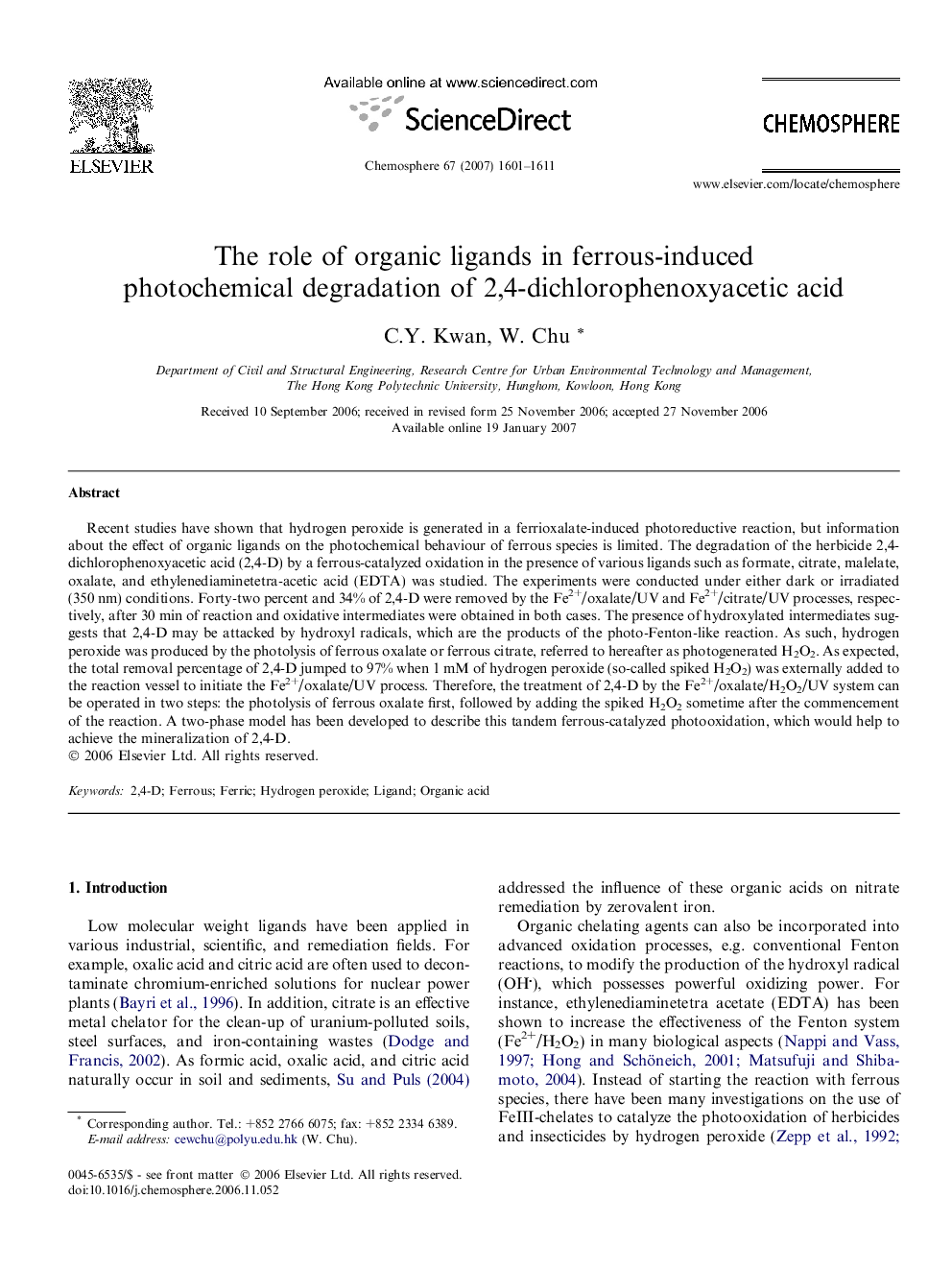| Article ID | Journal | Published Year | Pages | File Type |
|---|---|---|---|---|
| 4415854 | Chemosphere | 2007 | 11 Pages |
Recent studies have shown that hydrogen peroxide is generated in a ferrioxalate-induced photoreductive reaction, but information about the effect of organic ligands on the photochemical behaviour of ferrous species is limited. The degradation of the herbicide 2,4-dichlorophenoxyacetic acid (2,4-D) by a ferrous-catalyzed oxidation in the presence of various ligands such as formate, citrate, malelate, oxalate, and ethylenediaminetetra-acetic acid (EDTA) was studied. The experiments were conducted under either dark or irradiated (350 nm) conditions. Forty-two percent and 34% of 2,4-D were removed by the Fe2+/oxalate/UV and Fe2+/citrate/UV processes, respectively, after 30 min of reaction and oxidative intermediates were obtained in both cases. The presence of hydroxylated intermediates suggests that 2,4-D may be attacked by hydroxyl radicals, which are the products of the photo-Fenton-like reaction. As such, hydrogen peroxide was produced by the photolysis of ferrous oxalate or ferrous citrate, referred to hereafter as photogenerated H2O2. As expected, the total removal percentage of 2,4-D jumped to 97% when 1 mM of hydrogen peroxide (so-called spiked H2O2) was externally added to the reaction vessel to initiate the Fe2+/oxalate/UV process. Therefore, the treatment of 2,4-D by the Fe2+/oxalate/H2O2/UV system can be operated in two steps: the photolysis of ferrous oxalate first, followed by adding the spiked H2O2 sometime after the commencement of the reaction. A two-phase model has been developed to describe this tandem ferrous-catalyzed photooxidation, which would help to achieve the mineralization of 2,4-D.
